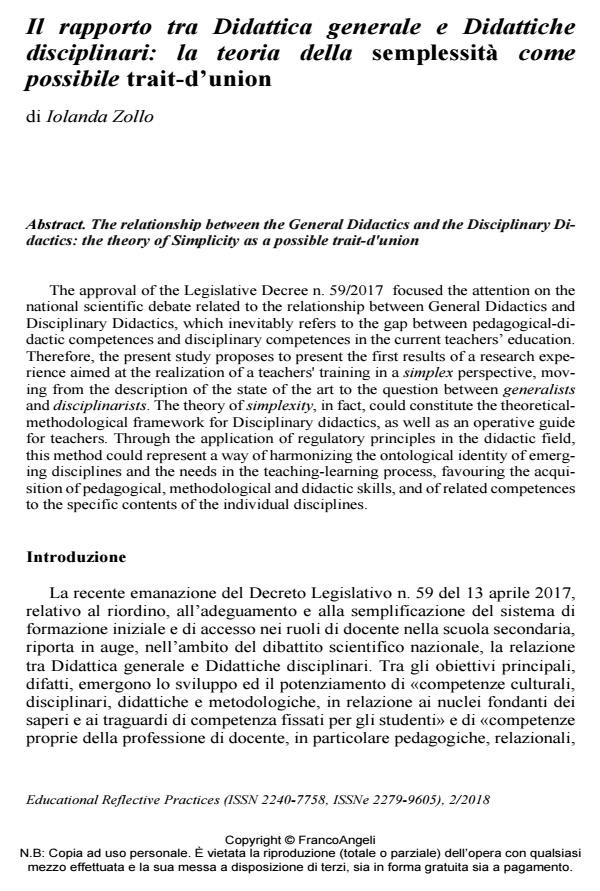The relationship between the General Didactics and the Disciplinary Didactics: the theory of Simplicity as a possible trait-d'union
Journal title EDUCATIONAL REFLECTIVE PRACTICES
Author/s Iolanda Zollo
Publishing Year 2019 Issue 2018/2
Language Italian Pages 14 P. 258-271 File size 198 KB
DOI 10.3280/ERP2018-002017
DOI is like a bar code for intellectual property: to have more infomation
click here
Below, you can see the article first page
If you want to buy this article in PDF format, you can do it, following the instructions to buy download credits

FrancoAngeli is member of Publishers International Linking Association, Inc (PILA), a not-for-profit association which run the CrossRef service enabling links to and from online scholarly content.
The approval of the Legislative Decree n. 59/2017 focused the attention on the national scientific debate related to the relationship between General Didactics and Disciplinary Didactics, which inevitably refers to the gap between pedagogical-didactic competences and disciplinary competences in the current teachers’ educa-tion. Therefore, the present study proposes to present the first results of a research experience aimed at the realization of a teachers' training in a simplex perspective, moving from the description of the state of the art to the question between generalists and disciplinarists. The theory of simplexity, in fact, could constitute the theoretical-methodological framework for Disciplinary didactics, as well as an operative guide for teachers. Through the application of regulatory principles in the didactic field, this method could represent a way of harmonizing the ontological identity of emerging disciplines and the needs in the teaching-learning process, fa-vouring the acquisition of pedagogical, methodological and didactic skills, and of related competences to the specific contents of the individual disciplines.
Iolanda Zollo, Il rapporto tra Didattica generale e Didattiche disciplinari: la teoria della semplessità come possibile trait-d’union in "EDUCATIONAL REFLECTIVE PRACTICES" 2/2018, pp 258-271, DOI: 10.3280/ERP2018-002017